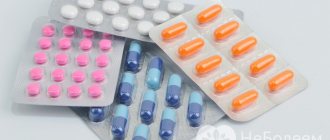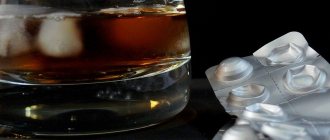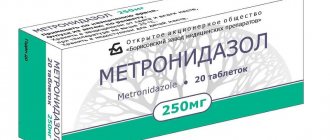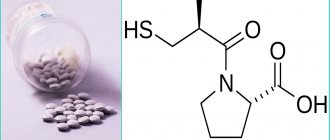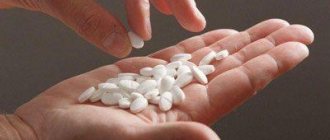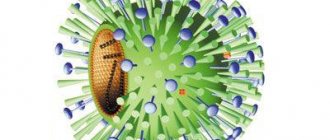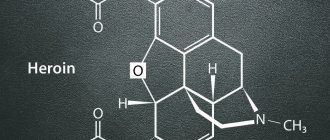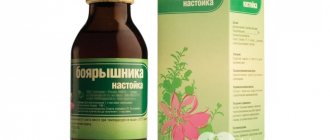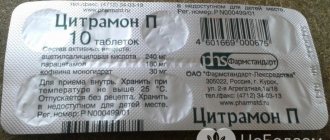Rating of effective remedies for alcoholism for 2020
| # | Name | Price | % cure |
| 1 | Alcolock | 990 rub. | 94% |
| 2 | Alconex | 147 rub. (promo) | 90% |
| 3 | AlkoProst | 1000 rub. | 85% |
| 4 | Esperal | 1243 rub. | 50% |
| 5 | Metadoxyl | 1359 rub. | 40% |
Every day, hundreds of people end up in medical clinics after taking pills and alcohol at the same time. There are frequent cases of combining the tranquilizer phenazepam and alcohol.
Our goal is to find out the possibilities of combining these two substances; we will also consider the case of overdose, permissible and lethal doses, as well as the consequences of taking them.
Clinical picture of phenazepam poisoning
Phenazepam is a medicine that has the following properties: anticonvulsant (used in the treatment of epilepsy, alcoholic delirium), sedative, hypnotic (for insomnia caused by unmotivated anxiety), muscle relaxant (for muscle spasms). The drug is addictive; for the same effect, you need to increase the dose. At home, without medical supervision, an overdose can occur. The clinical picture develops in stages:
- Initial manifestations are similar to alcohol intoxication. After taking a high dose of medication, the first symptoms appear within 30 minutes. The patient is in a state similar to intoxication: he is incredibly happy, feels strong, fearless. The patient's speech is slurred and unclear. Coordination of movements is impaired. Symptoms of euphoria are replaced by drowsiness and apathy. The patient falls into a deep sleep. An objective examination reveals bradycardia (heart rate less than 60), increased salivation, the reaction of the pupils is lively, they are narrowed.
- In the second stage, the person falls into stupor - a superficial coma. The patient is unconscious. The main difference from a deep coma is that the reaction to pain is preserved. The pupils are constricted. There is vomiting, which threatens lung aspiration. Muscle reflexes and tone are reduced.
- Without medical help, the second stage quickly progresses to the third. The patient is in a deep coma and does not respond to external stimuli. Main symptoms: thread-like pulse, bradypnea (rare breathing), all reflexes are completely turned off. Impaired kidney and liver function occurs. Only correct and effective emergency measures can help the patient. The absence of medical intervention threatens to stop breathing, cardiac activity, and brain function.
- The fourth stage occurs only after adequate and timely treatment. It's called awakening. The person comes out of a coma, and lost systemic functions are gradually restored.
The presence of medications at home poses a direct threat to the child’s health. Often young children accidentally take pills out of curiosity. Grandmother, grandfather, and mother were prescribed the drug, the child was interested in the open cabinet, and trouble could not be avoided.
According to statistics, 20% of teenagers take drugs in high doses for the purpose of suicide.
There are three degrees of phenazepam overdose:
- Easy. A small dose of the drug does not suppress higher nervous activity and is manifested by minor behavioral disturbances. The patient is sleeping. Decreased tendon reflexes, muscle hypotonia, and uncoordinated movements are noted.
- Moderate degree is an intermediate state between mild manifestations of poisoning and coma. The patient has impaired swallowing and cough reflex. On objective examination, the pupils are constricted and do not respond to light stimuli. Severe degree is characterized by agony, complete loss of vital functions. The patient exhibits pathological types of breathing, weak pulse, abnormally dilated pupils, decreased body temperature and blood pressure.
- Chronic poisoning is distinguished separately. The patient independently increases the dosage or number of phenazepam doses. First, trembling of the limbs, unmotivated weakness, attacks of nausea, depressive, anxious states, and insomnia appear. Over time, the clinical picture is supplemented by complaints of vomiting, epigastric pain, hallucinations, and convulsions.
Lethal quantity
- Phenazepam plus ethanol will give an unknown effect, not a single person can say what will happen to the patient after such a dose. The magnitude of the lethal dose is determined by concomitant pathologies, the state of the immune system, the food taken and the presence of drug intolerance.
Pharmaceutical data indicate that 7 ml of the drug in the form of an intravenous injection or 10 mg in tablet form causes an overdose. The patient finds himself between life and death and may die. The possibility of survival is negligible even with competent and timely medical care.
Composition, manufacturer, price
Phenozepam is a highly effective drug from the group of tranquilizers. The medicine is used in various fields of medicine: addiction and psychiatry, neurology and therapy. It has proven itself well as a hypnotic and anticonvulsant. This is the first benzodiazepine tranquilizer created by a group of Soviet scientists.
It should be noted that the drug cannot be purchased without a prescription. The drug is prescribed by the attending physician, who must write a pharmacological prescription in Latin. It can be found in the pharmacy in the following forms:
- 0.5 mg tablets – taken orally (stored in a dry place);
- ampoules - injections are made.
Phenazepam is based on the active substance – bromodihydrochlorophenylbenzodiazepine. In addition, it contains starch, silicon, magnesium stearate, etc. Depending on who the manufacturer is, the price of the drug will depend - the average cost is 110 rubles.
What does Phenazepam help with?
Most often, the medication is used as a tranquilizer - it eliminates convulsive activity, tremors, hyperkinesis, etc. The drug interacts with benzodiazepine receptors of the GABAergic complex, as a result of which the inhibitory effect of GABA is enhanced, neuronal activity and descending effects on the spinal cord are reduced.
Most often, the remedy helps with the following conditions:
- psychopathic and psychopathic-like attack;
- neurosis-like and neurotic attack;
- increased irritability;
- emotional imbalance (fear, anxiety);
- psychosis, seizures and sleep disorders;
- state of stress.
This is dope?
Phenazepam (INN) is a tranquilizer from the group of benzadiazepines. Some patients mistakenly call it a drug. In fact, the drug does not cause euphoria, excitement or other effects. It acts exclusively on the patients' braking system. The list of side effects contains specific information on this matter - with long-term use and abrupt withdrawal of Phenazepam, withdrawal syndrome and drug dependence can form.
This is due to the fact that for a long time the effects of inhibitory neurotransmitters were potentiated by the drug. After its withdrawal, the feeling of fear and anxiety returns again, so psychological dependence is formed.
Over-the-counter analogues of Phenazepam
Recently, Phenazepam is very often used for non-medical purposes - suicide of people. In this regard, it is under strict control. Many patients who need the product are looking for various analogues. Most often, doctors recommend various over-the-counter forms: fenzitate, phenibut, fezipam, etc. The most popular analogue (according to Health Mail.Ru) is melaxen, which contains melatonin. This drug can have a powerful hypnotic effect and also has minimal contraindications.
Indications for use
The annotation for the product states that Phenazepam can be used in the preparatory period for surgery, during anesthesia. Injections and tablets help eliminate insomnia and panic attacks. Phenazepam is an excellent prophylactic against the sudden onset of fear and emotional tension. The drug is taken not only for mild neurotic conditions: the active substance Phenazepam is potent and is prescribed by a doctor for febrile schizophrenia. Indications for use:
- feeling on the verge of neurosis;
- psychopathic state;
- emotional lability (sharp mood swings, instability, increased excitability);
- severe irritability;
- increased tension;
- autonomic dysfunctions;
- obsessive states;
- epilepsy of various types;
- athetosis;
- muscle stiffness;
- hyperkinesis;
- complex therapy for toxicological, withdrawal syndrome (treatment of alcohol dependence).
Overdose symptoms
An overdose of any drug is dangerous, so they must be taken carefully, in full accordance with the prescriptions of the attending physician. Phenazepam with alcohol is very dangerous, but by itself it should be taken only in the dosage prescribed by a specialist
An overdose of phenozepam may be small, but even in this case, disturbances in the activity of the central nervous system will be observed. A severe overdose is life-threatening; there is a suppression of heart function and respiratory activity. In severe forms, an overdose of phenozepam causes symptoms such as pronounced drowsiness, in which the patient cannot be awakened, severe tremor, prolonged confusion, decreased reflex functions, shortness of breath, nystagmus, dysarthia, stupor, severe difficulty breathing, coma. If you combine large doses of medication with alcohol, you get a so-called lethal dose.
In case of an overdose, you must immediately call an ambulance until a doctor arrives, and constantly monitor the victim’s condition. If he is conscious, then he will have to organize gastric lavage. To do this, you need to use a large amount of water (about three to five liters) or a solution of sodium sulfate or sodium chloride. After this, the victim should be given activated charcoal, which will help delay the absorption of the drug taken into the walls of the intestines and stomach. You can use a laxative to speed up the elimination of toxins from your body. The patient should not be allowed to sleep; if breathing stops, artificial respiration must be performed.
Treatment of an overdose is possible only in a hospital setting; you should not try to do it at home. In the hospital, the effect of the drug on smooth muscles is immediately weakened, for which drugs based on strychnine are used. They are usually prescribed intramuscularly, two to three times a day. These are injectable 0.1% solutions of strychnine nitrate or solutions of corazol; anexat, a solution of sodium chloride 0.2 milligrams 0.9%, a solution of glucose 5% can also be used. After this, symptomatic treatment is prescribed. Consumption of alcoholic beverages is strictly prohibited.
https://youtube.com/watch?v=PSa3yJUt1%26w
Phenazepam is a fairly powerful psychotropic drug belonging to the benzodiazepine series. The effect of taking it is as follows: a decrease in spontaneous motor activity, an antipsychotic, tranquilizing, hypnotic effect. It is prescribed for reactive psychoses, obsession, insomnia, for neurotic, psychopathological, neurosis-like conditions, for treatment of alcoholism. But you should take phenazepam only as prescribed, without exceeding the dose. Under no circumstances should an overdose be allowed, as the amount of the drug can be fatal.
ATTENTION! The information published in the article is for informational purposes only and does not constitute instructions for use. Be sure to consult with your doctor!
Alcohol addiction is a huge grief for many families. One of the popular remedies for this disease today is monastery tea for alcoholism.
Lovage for alcoholism: the recipe for this potion is based on inducing a persistent aversion to alcohol in the patient.
Taking the drug for alcoholism Alcobarrier should be carried out according to the instructions for use, which contain a detailed description.
Copyright Alko03.ru, 2013–2016.
Attention! The information published on the site is for informational purposes only and does not constitute a recommendation for use. Be sure to consult with your doctor!
Is it possible to give it to a drunk person?
The instructions indicate that Phenazepam eliminates dependence on alcohol, but it should not be taken while intoxicated. If a drunk person takes Phenazepam, then ecstasy will first occur, which will lead to the development of a dangerous addiction - to drugs from a number of tranquilizers. In addition, a clouded mind can lead to death: a person under the influence of alcohol will not know how many Phenazepam tablets he has taken and will violate the dosage prescribed by the doctor. If the alcoholic survives, then the alcohol dependence syndrome will worsen.
About incompatibility with beer
Beer is a low-alcohol drink (there are also non-alcoholic drinks), so many people think that taking a Phenazepam tablet with beer is safe. And if it is also non-alcoholic, then you don’t even have to expect any consequences. But actually it is not. Drinking even non-alcoholic beer with the drug Phenazepam is dangerous and can seriously harm the human body.
At first glance, beer seems to be a harmless drink, which, even when consumed with tranquilizers, cannot cause much harm to health. But as soon as beer enters into a biochemical reaction with the drug, it begins to provoke severe depression. The best thing that can happen in this case of mixing these substances is sleep, during which there is a risk of deterioration in respiratory functions.
In this case, of course, there will be a lack of coordination, inhibition of attention, nausea, vomiting and fainting. But these are only general features of adverse reactions. Each organism is unique and reacts to stimuli in its own way. Therefore, you need to understand that some people will get away with just vomiting, while for others such an “experiment” will end in death.
There are also cases that at first, when consuming Phenazepam with beer, no physical or mental side effects occur, but if you are tested in a hospital, you can see serious disturbances in various body functions.
If you mix alcohol with Phenazepam, in any case you need to go to the hospital, where they will give you a drop of glucose. But even after this, it is necessary to undergo a central nervous system test, examine the kidneys, liver and heart.
Phenazepam is a highly active tranquilizer, which itself has many serious side effects. Due to the fact that the drug is psychoactive, mixing it with drugs, other tranquilizers, antidepressants, sleeping pills and taking the drug simultaneously with alcohol is strictly prohibited, since all these substances mutually enhance each other’s actions.
The chances of saving a person if he drank a low-alcohol drink along with the drug or its analogues are much higher than if he drank alcohol over 30°C. But still, low-alcohol drinks and even non-alcoholic beer can harm your body - primarily the nervous system, also the heart, kidneys and liver... To prevent this from happening, always follow your doctor’s prescriptions and under no circumstances mix Phenazepam with alcohol.
Treat your treatment responsibly, and do not think that you can avoid the consequences. Remember that your health is not a toy, and you cannot conduct various experiments on it.
Found a mistake? Select it and press Ctrl + Enter
Several reviews
Here are some opinions from those who have already had the opportunity to evaluate the effect of Phenazepam in the fight against withdrawal.
Vasily, St. Petersburg: “From my own experience, I can say that Phenazepam should not be mixed with alcohol, of course. And it’s better to find other remedies for a hangover. Perhaps, when recovering from a drunken state, it is worth taking to make it feel better. I take Phenazepam for insomnia, it helps me.”
Ivan, Stavropol: “Phenozepam may not be dangerous in small doses, even mixed with alcohol, but an overdose or use several times a day is dangerous even without alcohol (tested), and an overdose with alcohol is simply unpredictable - in my experience, an overdose with alcohol (beer) ) erased several lives from my consciousness. Alcohol and Phenozepam are incompatible! Don’t experiment, it’s not worth it.”
Konstantin: “I can only tell you that Phenazepam is a drug that is undesirable to take for more than 2-4 weeks. This drug is taken strictly according to the regimen and in the doses prescribed by the attending physician. The combination of Phenazepam and alcohol is strictly contraindicated, due to the fact that they mutually reinforce each other, and what is especially important to remember: alcohol enhances the inhibitory effect of any psychotropic drugs (not just Phenazepam) on the central nervous system!
Overdose, addiction, harm to the body
For outpatient treatment (at home), Phenazepam is taken 0.25–0.5 mg 2–3 times a day. Under the supervision of a doctor in a hospital, the dosage can be increased to 5–10 mg per day. Such measures are taken for effect as a last resort - for example, in the treatment of epilepsy.
The maximum permissible daily dose of Phenazepam for an adult is 0.01 g.
Overdose is expressed:
- excessive sleepiness;
- prolonged confusion;
- decreased reflexes;
- long-term dysarthria;
- muscle tremors;
- bradycardia (low heart rate, pulse about 30–50 beats per minute);
- shortness of breath, disruption of the respiratory cycle;
- decreased blood pressure;
- coma.
Taking Phenazepam, even in permitted doses, may be accompanied by side effects:
- regular feeling of fatigue;
- deterioration of concentration, attention and memory;
- partial or complete disorientation;
- difficulty in motor and mental reactions;
- headaches;
- increased depression;
- asthenic syndrome;
- dysarthria (speech disorder);
- dizziness;
- ataxia (motility disorder, expressed in inconsistency of movements of different muscle groups);
- unbalanced gait;
- confusion;
- euphoric state.
Disturbances in the functioning of the cardiovascular system and changes in the biochemical composition of the blood are often observed. Long-term use of Phenazepam can provoke:
- leukopenia and agronulocytosis - a decrease in the level of leukocytes in the blood;
- thrombocytopenia – decreased platelet count, deterioration of coagulation;
- neutropenia – a decrease in the number of neutrophils, reducing the body’s resistance to bacteria and fungi;
- tachycardia – increased heart rate;
- anemia – decreased levels of hemoglobin and red blood cells.
The following reactions are observed from the digestive system:
- dryness of the mucous membranes of the oral cavity;
- heartburn;
- nausea, vomiting;
- stool disorders (constipation or vice versa, diarrhea);
- loss of appetite;
- jaundice;
- destabilization of the liver.
With long-term use of this tranquilizer (more than two weeks), patients become dependent. Without Phenazepam, they feel a deterioration in their condition, inexplicable anxiety and panic. The initial dosages of Phenazepam have to be increased.
If treatment is abruptly stopped, withdrawal syndrome occurs. Often, patients who have tried to cope with alcohol addiction fall into a new trap from which they can no longer get out on their own. Destabilization of the mental state caused by side effects can lead them to rash actions.
After the first symptoms of addiction to Phenazepam appear, you should contact your doctor to replace the therapy with a safer analogue.
Contraindications
Phenazepam is prohibited from use in the following cases:
- glaucoma;
- state of shock;
- pregnancy;
- breastfeeding period;
- chronic and acute renal dysfunction;
- myasthenia gravis;
- severe liver damage;
- myasthenia gravis (muscle weakness);
- individual intolerance to components.
If there is a need to increase the dosage of Phenazepam due to the body’s addiction, it must be agreed with the attending physician. Increasing the dose on your own is unacceptable.
Phenazepam should not be combined with alcohol, analgesics with narcotic properties, or hypnotics. It is also not recommended for children and adolescents under 18 years of age.
Lethal dose
It is necessary to understand that any amount of alcohol and Phenazepam taken together can lead to death. Doctors consider the generally accepted lethal dose of Phenazepam to be 10 mg. For example, a package of 10 pcs. contains 1 mg of active ingredient per tablet. The package will be lethal if consumed at once or throughout the day, in combination with any alcoholic beverages. With regard to the solution, everything is different: here the daily dose should not exceed 7 ml, that is, you cannot use more than 7 ampoules of the medicine.
How dangerous is the combined use of alcohol and Phenazepam?
Can Phenazepam be taken in combination with alcohol? The categorical answer is: no, under no circumstances. If you mix the drug with alcohol, the effect of Phenazepam on the central nervous system will become more noticeable. The following reactions occur:
- Severe lethargy, dizziness, vomiting, hallucinations, changes in coordination of movements. Only medicine cannot have this effect. This becomes possible if you drink even a little extra alcohol.
- Alcohol in combination with Phenazepam leads to the development of shortness of breath. And the more a person drinks, the more pronounced it is. You can even die from suffocation. This cocktail is often consumed by people with suicidal tendencies. The only way to save the life of such a person is to flush the stomach in time in a hospital. This action can help if the substance does not have time to enter the blood.
- Alcohol plus Phenazepam can cause cardiac arrest. Among doctors there are two definitions: “drunk sleep” and “Phenazepam sleep”. A dangerous combination leads to respiratory depression and causes vomiting. When taking large quantities, retrograde amnesia develops, and urinary and fecal incontinence is observed.
- Attacks of aggression, suicidal tendencies, memory impairment. All these effects can occur if a person suddenly decides that the drug is compatible with alcohol-containing drinks.
It is worth noting that a person who has consumed alcohol and Phenazepam is able to forget whether he took 1 tablet of the medicine, or more, and take more. This leads to an overdose and the development of the above reactions.
Why can't you mix Phenazepam and alcohol? This combination is extremely dangerous, since no one knows how much a person can take the first and second.
Death from the drug
It's no secret that Phenazepam should be taken only strictly following a doctor's prescription. But still, there are people who deliberately increase the dose on their own, because either, as it seems to them, a smaller dose is ineffective, or as a narcotic drug. It must be remembered that only 10 mg of the active substance bromodihydrochlorophenylbenzodiazepine , which is contained in a Phenazepam tablet, and 8 mg of the same substance in a Phenazepam solution, is a lethal dose for humans . And if you take the drug with alcohol, then this dose will become smaller, so an overdose will occur from just a few tablets, and the person can easily die.
Consequences of a frivolous attitude
Phenazepam and alcohol are one of the extremely dangerous combinations. Alcohol increases the effect of tranquilizers several times, and hemoglobin and leukocytes in the blood immediately drop to critically low levels.
Consequences include convulsions, choking on vomit during sleep, urinary retention, and slow heart rate. The liver stops coping with toxins.
Urgent hospitalization is required.
Phenazepam and alcohol: the consequences of such use are sometimes incompatible with life. Doctors constantly talk about the dangers of such experiments, but not all people listen to advice.
Our goal is to find out why it is strictly forbidden to take such a combination of substances and what consequences this leads to.
Why is Phenazepam needed?
This medicine belongs to the group of benzodiazepanes. The drug is actively used to restore and treat problems with the central nervous system, relieving symptoms that often develop with depression: fear, anxiety, depression, tension.
Phenazepam has the following effects on the human body:
- sleeping pills;
- anticonvulsant;
- tranquilizing.
Most people start taking such a serious drug as Phenazepam. And few people take seriously the ban on drinking alcohol during therapy.
People forget that not all rules can be broken without avoiding consequences for themselves and their body.
Because of this, cases occur when a person ends up in the hospital with serious consequences of combining a tranquilizer and alcohol.
What is the drug taken for?
Phenazepam and alcohol are practically incompatible concepts, despite the fact that the medicine is used to relieve hangovers.
Phenazepam and alcohol should not be consumed together during the course of treatment, since the consequences of such a combination can in some cases lead to the death of the patient. Phenazepam belongs to a group of tranquilizers that can have a very strong effect on the patient.
But Phenazepam is used after other medications have proven unable to eliminate the disease. This is done only with a prescription from your doctor.
When is Phenazepam prescribed to patients?
Since this drug relieves anxiety, attacks of fear, severe tension, increased irritability in patients and has a calming effect on the patient’s nervous system, doctors prescribe Phenazepam to people who have developed psychoses of various etiologies.
At the same time, the drug is recommended during dystonia of the vegetative-vascular type, in the presence of dizziness of unknown origin, headaches, and various types of epilepsy.
The medication may relieve seizures. During surgical operations, this medicine is used to enhance the effect of anesthesia or various painkillers on the patient.
But, as noted above, the drug is often used by doctors to cure hangover syndrome, since many manifestations of this disease have symptoms that the described medication can eliminate.
What happens if you drink medicine and alcohol?
The alcohol contained in alcohol has a negative effect on the patient’s body and brain. Phenazepam has a strong effect on the patient’s central nervous system and can in some cases have a negative effect on the psyche.
In some cases, doctors use Phenazepam for alcoholism. Under the strict supervision of a doctor and in a hospital setting, some side effects of severe alcohol intoxication are relieved with a tranquilizer.
But taking aggressive medication for a common hangover at home is unacceptable.
Such “treatment” can have the most unpredictable and dangerous consequences. A person may encounter:
- Strengthening the effect of the drug itself. At the same time, the functioning of all internal organs and systems of the body will sharply deteriorate: respiratory, cardiac, digestive, nervous.
- Often an overdose of the drug leads to death. Even if a person does not die from suffocation and can be pumped out, all chronic diseases will sharply worsen, which can lead to death from their exacerbations.
- When a tranquilizer is combined with the beer beloved by many, a person can fall into a state of deep sleep and coma (in case of an overdose). With mild exposure, people develop persistent thoughts of suicide, depression and various mental disorders.
Alcohol addiction
Alcohol addiction is one of the most common drug addiction diseases. You can call it a mass disaster, because this disease has entered almost every family in Russia. Alcoholism is a disease that is expressed in excessive and uncontrolled craving for alcohol. An alcoholic drinks doses of alcohol that a healthy person would never dream of, although this only happens for the time being.
Alcoholism is a real drug addiction and has all its signs. It completely subjugates the life of an addicted person, destroying all its spheres: social, physical, emotional and spiritual. Drug addiction, if it appears and is not treated, never stands still and progresses. With each intake, the patient consumes more and more alcohol, the body’s tolerance to it increases, up to the third and final stage of addiction.
Alcohol addiction, like any drug addiction, does not affect just one organ in the human body, but causes irreparable harm to the entire body. Constant severe intoxication leads to the fact that toxins clog the body and are not removed from it immediately, because the liver and kidneys cannot cope with such a volume of poisons.
It is the constant intake of alcohol in the body that leads to such a phenomenon characteristic of this disease as alcohol withdrawal syndrome.
Consequences of taking Phenazepam and alcohol
Let's consider the main factors of the effect of the drug "Phenazepam" on the body, which a person dares to take for alcoholism without fear for his life:
- The smallest part of the consequences is inhibition of consciousness, impaired coordination of movements. A drunk person has a gag reflex and hallucinations. Due to dizziness, unsteadiness in legs. And all this is due to the harmful effects of alcohol, since the medicine itself does not cause such effects.
- The next unpleasant factor is severe shortness of breath, which can be fatal due to the inability to inhale air. The worst thing is that there are people who want to take their own lives, who take just such a cocktail and die from severe pain and a terrible death. The combination of Phenazepam and alcohol plays a huge detrimental role in this.
- Poisoning of the body. A tranquilizer plus alcohol has serious consequences for the brain. The compatibility of such a cocktail for humans is simply zero.
- In case of an overdose, retrograde amnesia, a tendency to suicidal actions, severe aggressiveness, causeless rage may occur, inhibition of thinking is observed, and the person falls into a stupor.
- Drug addiction. The medicine is quite cheap and is sold in pharmacies without a prescription. Many people buy it to get rid of insomnia, relieve tension in cases of depression or anxiety. Moreover, this is done without a doctor’s prescription. You should not do this, as it can lead to a strong dependence on the drug. An overdose of Phenazepam can lead to harmful consequences.
- Stopping the heart can occur when two different medical concepts are combined, such as “alcohol sleep” and “phenazepam sleep”. A person has breathing problems, so the effect of Phenazepam increases due to alcohol, all this leads to the death of a person.
- Coma. Alcoholics during long-term binges, in order to increase the euphoria of a foggy state, take a “folk” tranquilizer. In a drunken state, the dosage can be increased and a simply lethal dose for the human body is drunk, which is equal to 10 mg in tablets or 7-8 ml in liquid form.
Related article: Overdose of sleeping pills Donormil: can you die?
Have you taken Phenazepam?
- Yes, no alcohol
- Yes, with drinking alcohol
- No never
Loading …
How does binge drinking occur?
Binge drinking is a long-term, constant, uncontrolled consumption of alcohol. An alcoholic is unable to stop the binge on his own, so in this situation he needs the help of loved ones and calling a narcologist.
By taking another dose of alcohol, the alcoholic tries to get rid of withdrawal symptoms. Each time use is stopped, withdrawal symptoms begin to appear within 5-6 hours. And here there are two options: endure the painful manifestations or seek treatment from a narcologist. Since the patient has a hard time: he has a headache, his blood pressure fluctuates, tachycardia and shortness of breath, depression appear, he is rarely able to endure all this.
Keep in mind that unlike a hangover, alcohol withdrawal symptoms worsen over several days and can even last several weeks in total. But once upon a time, alcohol brought positive experiences to the alcoholic, which allowed him to become hooked on addiction.
What happens if you take Phenazepam and alcohol together?
The combined effect of the drug "Phenazepam" with alcohol in any doses is manifested as follows:
- lethargy intensifies and is complemented by problems with coordination, dizziness, and vomiting. Hallucinations may occur;
- unmotivated aggression appears. Some people have obsessive thoughts about suicide and memory loss;
- euphoria comes faster and is more pronounced - it is the desire to get such a reaction that forces people to mix components. Memory problems arising against this background often become the cause of an accidental overdose;
- the body is poisoned. At best, alcohol intoxication against such a background causes a severe hangover;
- the likelihood of developing drug dependence increases;
- the functioning of organs and systems is disrupted. A person experiences severe shortness of breath, which can cause death from suffocation. “Drunk sleep” under the influence of the drug “Phenazepam” is no less dangerous. It threatens cardiac arrest and asphyxia with vomit.
To determine how long after taking Phenazepam you can drink alcohol, you need to take into account the half-life of the drug. In a healthy person it is about 12 hours. If you take 2 mg of the medicine, then after 12 hours about 1 mg of the active substance will remain in the blood, and after another 12 hours, at least 0.5 mg of the component will remain. You can drink alcohol if the content of phenazepam in the blood is no more than 0.2 mg, so you need to wait about 2 days to do this without increased health hazard.
Paired with beer
The prevailing opinion that Phenazepam can be taken with weak alcohol often becomes the cause of the development of emergency conditions. Any amount of ethyl alcohol in combination with a medicine can become a provocateur of mortal danger. Even in non-alcoholic beer it is present in minimal amounts, which also has a negative effect on the nervous system.
"Phenazepam" and beer - combination results:
- falling asleep quickly, sound sleep for at least 12 hours, during which suffocation may develop;
- severe depression after waking up;
- repeated use of a combination of medication with beer threatens suffocation even before the person begins to get drunk;
- systematic use of beer and medicine causes constant lethargy, absent-mindedness, and decreased intelligence.
By combining beer with the drug, even in minimal quantities that do not lead to the listed results, a person develops a persistent drug addiction. It can manifest itself at any time in its most acute form, requiring treatment under the supervision of professionals.
Paired with vodka
In the case of vodka, all of the listed consequences are amplified many times over; the risks of poisoning, allergic response and inhibition of important brain centers increase. The volume of components that determines the lethal dose is individual in each case, but against this background, even a minimal amount of alcohol and drug may be sufficient. Vodka also greatly increases the likelihood of developing a drug overdose of the product and developing addiction.
When is it allowed and when is it prohibited?
The principle of functioning of the drug Phenazepam for a hangover is based on its ability to increase the production and activity of the inhibitory transmitter of the central nervous system, which results in depression of the nervous system. Common symptoms after taking the drug include:
- drowsiness;
- suppression of emotional stress;
- getting rid of feelings of fear;
- relieving feelings of anxiety;
- decreased muscle tone.
During the period of cleansing the body after a long binge, the drug is used to penetrate the brain and influence individual receptors to suppress its excitation. Therefore, Phenazepam only treats acute withdrawal syndrome, when alcohol (which has similar properties) has already been eliminated from the body and cannot contribute to a dangerous interaction with the drug with an increase in the joint effect.
Features of taking alcohol and Phenazepam without overdose
Giving Phenazepam tablets to a drunk person means experimenting with his health. A tranquilizer and alcohol enhance each other's effects several times; both are highly addictive. There are no recommended minimum doses that would be harmless to the body and would not provoke dangerous complications.
Phenazepam and beer
Phenazepam and beer go well together, but only if the beer does not contain alcohol. In this case, only the absorption of the drug into the blood will accelerate due to the carbon dioxide content in the liquid. Non-alcoholic beer is not an alcohol-containing drink, therefore it is quite compatible with Phenazepam.
The sensitivity of a particular person’s brain to the toxic effects of ethyl alcohol from beer should be taken into account. In a normal state of health, resistance to ethanol, drinking beer in combination with a tranquilizer will only lead to a long sleep of 10 hours or more. After waking up, a person will feel lethargic, overwhelmed, and unrested. And such a combination in old age or in the presence of chronic pathologies will cause an overdose.
Phenazepam for hangover
Hangover syndrome is a pathological condition that occurs several hours after drinking alcohol. A person feels weak, tired, dry mouth, and headache. He suffers from hypersensitivity to auditory and visual stimuli, trembling of the arms and legs, nausea and vomiting. Phenazepam helps get rid of some hangover symptoms, but only temporarily. After a few hours, the situation worsens - the psycho-emotional state deteriorates significantly, as does the physical one.
Drinking Phenazepam tablets with a hangover is strictly prohibited. There is still a lot of alcohol and toxic breakdown products in the blood. Taking even a small amount of the drug can cause an overdose.
Treatment of alcoholism with Phenazepam
In narcology, the use of Phenazepam for alcoholism is practiced, but only during the period of withdrawal of a person from binge drinking. After giving up alcohol, abstinence occurs - a complex of pathological symptoms that resembles a hangover in its manifestations. However, this syndrome is more pronounced and differs in duration.
Ethanol is integrated into the chains of biochemical reactions, and when trying to remove it from there, the following mental disorders occur in an alcoholic:
- sleep disorders;
- nightmares;
- anxiety;
- sad mood;
- irritability;
- aggression towards others.
It is to eliminate these signs of withdrawal syndrome that patients after binge drinking are given Phenazepam. But before this, the doctor prescribes a test to make sure that there are no traces of ethyl alcohol left in the patient’s blood.
The use of Phenazepam is carefully monitored by medical staff of drug treatment clinics. Blood pressure and heart rate are constantly monitored.
Treatment of alcoholism
First of all, it is worth saying that without treatment, alcohol addiction progresses. With each new use, a person’s craving for alcohol increases, their general health deteriorates, and the body’s ability to resist illness decreases.
Treatment of alcoholism in the full sense of the word is the achievement of freedom from addiction, long-term remission. Such treatment involves drug detoxification of the body, rehabilitation and adaptation to ordinary life - socialization.
Most alcohol addicts do not immediately seek such treatment; in fairness, it is worth saying that their relatives usually call a narcologist when their drinking bouts begin. Therefore, in addition to the full course of treatment, there are also a lot of procedures that help a person with addiction stay afloat: treatment of withdrawal symptoms, withdrawal from binge drinking, coding. These services in narcology are in widespread demand today.
Possible consequences
Any poisoning, drug or medication, threatens serious complications for the human body. It is easier to prevent a disease than to spend years restoring physiological functions.
Poisoning with the drug phenazepam causes the following consequences:
- Damage to the respiratory system (aspiration, secondary pneumonia).
- Cerebellar ataxia (impaired coordination of movements).
- Inflammatory kidney diseases (phenazepam is excreted by the kidneys, a high dosage of the drug causes an adverse effect on nephron function).
- Emotional instability (depression, anxiety).
- Liver damage.
- Long-term recovery may be accompanied by trophic disorders - bedsores.
When treating with any medications, extra precaution will not hurt. Designate a hard-to-reach place in the cabinet for pills so that children cannot get them.
Take medications strictly as prescribed by your doctor, do not mix with alcohol.
Many diseases in psychiatry, neurology, and resuscitation are treated with phenazepam. If the dosage of the drug is increased or used incorrectly, acute poisoning may occur.
The article was approved by the editors
(Visited 1 times, 1 visits today)
Main contraindications
Drinking Phenazepam is strictly prohibited not only in the first hours of recovery from binge drinking, when the alcohol has not yet been completely eliminated from the drinker’s blood. The use of Phenazepam for a hangover is strictly prohibited when;
- myasthenia gravis;
- glaucoma (angle-closure);
- respiratory failure;
- liver and kidney damage;
- states of shock, coma;
- acute ethanol poisoning;
- severe depression.
Drinking this medicine for all these problems is prohibited unless it is prescribed by a doctor in an acceptable dosage and is not used under his supervision.
conclusions
Phenazepam is a powerful anxiolytic drug with a strong hypnotic effect, as well as a muscle relaxant and anticonvulsant effect. It is successfully used in drug treatment clinics to relieve symptoms of severe withdrawal syndrome in the treatment of chronic alcoholism. However, it is worth remembering that its simultaneous use with ethanol is fraught with dire consequences for the body, the worst of which is the death of the patient. In order to avoid such troubles, it is necessary to use such a drug only under the supervision of a specialist in a specialized medical institution. Self-medication and uncontrolled use of Phenazepam can cost lives.
How soon can you take Phenazepam after drinking alcohol?
Phenazepam in combination with alcohol leads to the development of severe consequences. Therefore, you should know how long it is permissible to take Phenazepam after drinking alcohol. The half-life of the drug is 12 hours. This means that every 12 hours its concentration in the human body decreases by half. For example, if initially Phenazepam was 4 ml, then after 12 hours there will be 2 ml, and after another 12 hours - 1 ml.
1 tablet contains 2 mg of Phenazepam. This means that after taking this pill you need to wait 48 hours, no less. After the first 12 hours, 1 mg remained, after 24 hours - 0.5 mg, and so on. After 48 hours, 0.125 mg remains, which is less than the acceptable amount. In turn, after 2 tablets of Phenazepam 96 hours should pass, after 3 - 144 hours.
Providing first aid
To eliminate the consequences of using Phenazepam with alcohol, urgent medical assistance is required. You can try to alleviate the victim’s condition before the ambulance arrives.
It is necessary to rinse the stomach with water with added salt. It is necessary to repeat the procedure until the rinsing waters become clear. Next, if the victim is conscious, cleanse the intestines with an enema. Give the patient a sorbent agent - activated carbon, Polysorb or Enterosgel. The person’s condition must be monitored before medical care is provided. It is necessary to monitor your breathing and pulse. In case of fainting, place the victim in such a way as to fix the legs above the level of the head. Also, to prevent the effect of the tongue sinking, an unconscious patient needs to tilt his head back and open his mouth, pushing the lower jaw forward.
In hospital settings, the antidote to Phenazepam, flumazenil, must be administered intravenously. The drug should be used in a course of 10 injections, which is equal to 3 mg. In severe cases, hemodialysis is performed and tracheal intubation is performed.
Tracheal intubation
List of standard procedures in a hospital after using Phenazepam with alcohol:
- Using a tube to cleanse the stomach.
- Droppers with saline and glucose to eliminate intoxication of the body.
- The use of drugs to normalize the functioning of the respiratory system and stabilize blood pressure.
- Use of a ventilator in case of difficulty breathing.
- Resuscitation measures.

